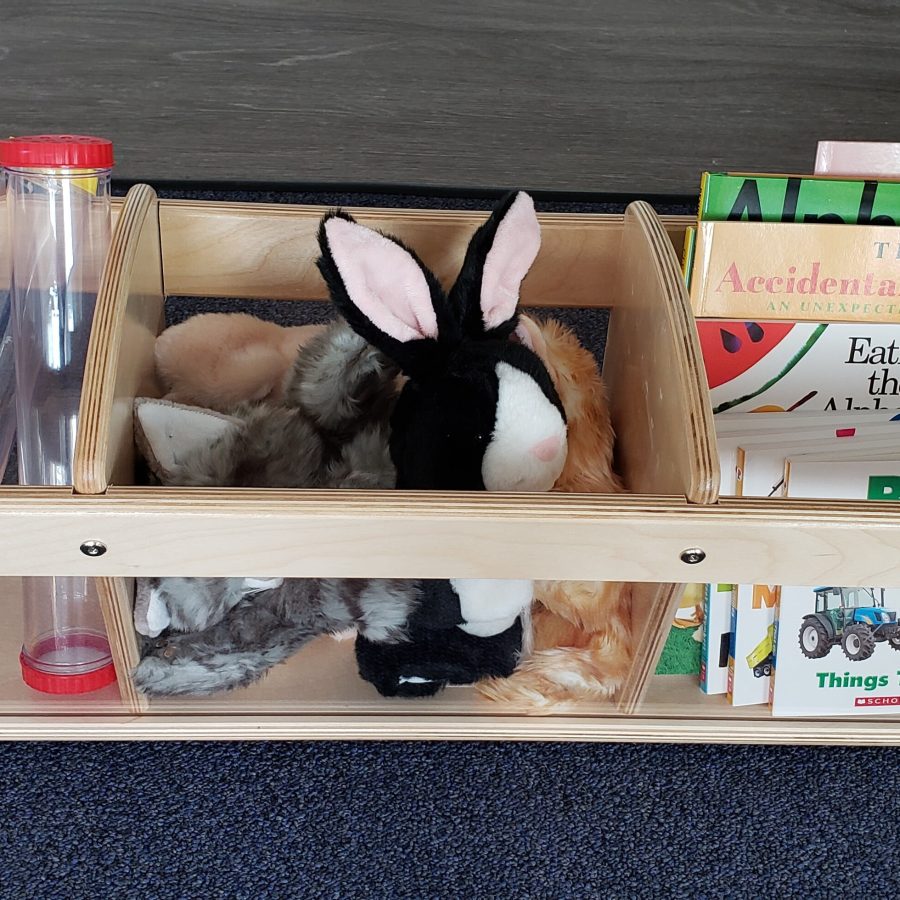Nurturing Future Innovators Through Hands-On Learning
Early STEM Education – Picture a first-grade classroom, maybe even your own. Kids gather around the sand table, exploring the sand, letting the grains run between their fingers. The teacher passes out some props—marbles, rulers, boxes and cups—and lets students explore freely for a few minutes. The kids excitedly dig in, filling cups with sand and pouring it out, burying marbles, and turning the rulers into shovels and rakes.
Then she says: “I have a challenge for you today. How fast can you make the marbles roll?”
Kids start rolling marbles across the sand, only to find the marbles quickly get stuck, hung up on miniature sand dunes.
Then one student tries putting his marble on a ruler. It rolls much faster.
Then another props his ruler up on a cup and the marble flies.
The teacher watches quietly as the kids explore. Afterward, the teacher and her students gather on the rug to talk about their observations. She asks:
“What did you design out of your tools that make the marble roll fastest?”
“What do you think makes the marble slow down?”
“Why do you think the marble rolls faster on the ruler than in the sand?”
Sand tables have long been a staple of early education. It is the way we plan a classroom activity and the questions we invite children to explore that turn an ordinary play activity into savvy and pointed STEM education. This teacher’s methods are not only innovative but also an essential segue into her students’ future academic and professional success.
Why STEM in the Early Years?
Early STEM education — or science, technology, engineering and math — has become a big buzzword in educational circles in the last few years. However, our classrooms have not yet realized this potential as evidenced by a 2008 report, where in which the United States ranked 28th worldwide in math literacy and 24th in science literacy. Combine that with the fact that in US Department of Commerce research, workers in STEM fields earn 26% more than their counterparts and the job growth rate for STEM-related jobs is almost double that of non-stem occupations, and it’s easy to see that STEM education is essential for our future economy not to mention to our kids’ future success.
By giving our kids the tools they need to succeed in STEM, we are giving them a huge leg up as they enter the job market. But when we think STEM, we think middle school and high school, robotics and chemistry—not first graders and the sand table.
Too often, STEM education begins with a disjoined introduction to engineering and technology concepts starting in middle school. And while any exposure to STEM is good, research study after research study on STEM education has shown that kids who experience STEM early through hands-on learning are the ones who will be best equipped to develop a strong understanding of STEM concepts as they get older.
So how can you make STEM part of what your students do in the classroom every day? As an early education teacher, your plate is likely already quite full. The standards are there: with the advent of The Common Core along with the new Next Generation Science Standards, teachers have access to solid, research-based curricular guidelines for STEM education. But the everyday tools and the practical age-appropriate lesson plans can be a bit harder to come by.
To learn how early education teachers can effectively introduce STEM concepts, we sat down with Dr. Shelley Green, a professor of STEM education at Nova Southeastern University to talk about how busy elementary teachers can get a handle on STEM education in a way that’s meaningful and effective. Dr. Green helped us boil it down to the four essential tasks that teachers can do in order to lead their students to successful STEM education.
Task #1: Change Your Lens
Students STEM designHere’s the secret: most don’t have to overhaul the way they teach in order to become strong STEM educators. “It’s all about changing the lens through which we view our teaching practices,” says Green.
“Elementary teachers need the opportunity and the confidence to be engineers alongside their students,” says Dr. Green. This can be as simple as changing the kinds of questions we ask our students. “By adding a few words to your classroom questioning vocabulary — words like design, experiment, and model—a whole world of STEM learning can be opened up for students.” It’s all about tweaking the lessons, activities, homework and language just enough to create an environment where STEM is a natural but effective part of the curriculum.
Task #2: Enlist a Village of STEM Educators
As a teacher, you’re always busy innovating, finding new ways and cobbling together resources to help your students learn. But teachers shouldn’t have to carry the entire responsibility for STEM education; we need partners.
Recently, President Obama’s administration launched the Educate to Innovate initiative. The initiative asks communities, companies, parents and teachers to partner with schools to encourage STEM education. “Community partnerships—both with education businesses and higher education institutions,” agrees Dr. Green, “are a key factor in the success of STEM programs.”
Ideally, school districts should be receiving donated resources from local businesses and higher education institutions should provide hands-on and in-depth training to teachers. “Both have a huge stake in making sure this generation of students can take on the challenges of STEM,” says Green.
Of course, if any component of that triangular formula is missing, STEM education suffers. If businesses aren’t providing resources that are standards-aligned, effective and affordable, teachers won’t have the tools they need to teach. And, likewise, if higher education institutions aren’t providing quality training to teachers, then teachers may lose the opportunity to approach STEM teaching with confidence. STEM education is one of those areas where it really does take a whole village to effectively teach a child.
Task #3: Integrate STEM Across the Curriculum
Early education STEM design classWith Common Core, the push to teach reading and writing across the curriculum continues to grow. Likewise, the skills developed through STEM learning need to be integrated. If you’re familiar with the STEM to STEAM movement, you’ll know that many educators believe that true STEM education can only be accomplished by adding art into the mix. By adding art and music concepts like design, rhythm and movement to STEM education, students are able to fully visualize STEM concepts.
Dr. Green recommends taking this idea one step further. “So much would be gained if all teachers—art, music, reading, social studies, math and science—were able to spend some of their precious professional development time on STEM. The principles of STEM—critical thinking, asking good questions, observation and exploration—are truly at the heart of every discipline,” explains Green. School-wide STEM learning would enable teachers to work together to create unified curricular units that weave STEM concepts into every subject in a meaningful way.
Task #4: Give Kids More than Just Access to Technology
The “T” in STEM stands for technology, but exposure to educational technology is not enough for true STEM learning. Exposing kids to tools like computers, iPads, e-readers and apps early on is important, but it’s only through guided learning that these tools become an important part of STEM education, argues Green.
“We need to take a whole-child approach to teaching children about technology,” explains Green. “Teachers can help kids make connections across various technologies to real-world concepts simply by strategic questioning and guided learning, especially if they have had access to research-based STEM education and teacher training.”
Getting Started
So where do you begin? STEM education will only continue to expand and grow. Now is the time to seek out professional development in STEM and to start in small ways to make it a larger part of your approach to the classroom. With good resources and training, you can open up an entire world of STEM learning for your students. Who knows, the STEM seeds you plant may change their futures.
All you have to do is open the door and reach into the sandbox. Schedule a tour today!
(Source: weareteachers.com – By Erin McPherson)


